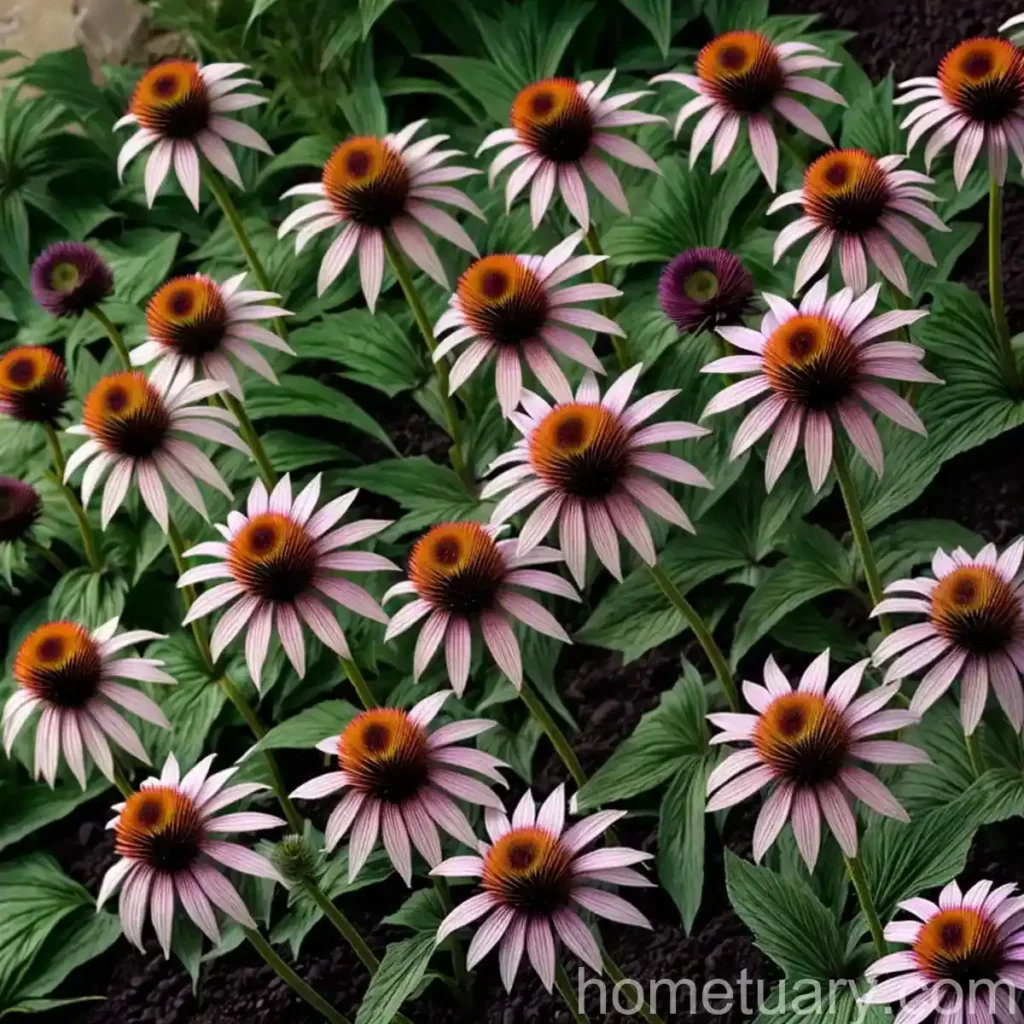Purple Coneflower (Echinacea purpurea ‘Lilliput’)
Introduction
Purple coneflower, scientifically known as Echinacea purpurea ‘Lilliput,’ is a stunning perennial herbaceous plant that belongs to the Asteraceae family. This popular garden plant is admired for its vibrant, daisy-like flowers and impressive medicinal properties. The ‘Lilliput’ cultivar is adored by gardeners for its compact nature, making it an excellent choice for small gardens and landscapes. In this comprehensive guide, we will delve into the captivating world of the purple coneflower, exploring its culture, uses, care requirements, propagation, common diseases, and much more.
What is Purple Coneflower (Echinacea purpurea ‘Lilliput’)?
Purple coneflower, or Echinacea purpurea ‘Lilliput,’ is a herbaceous perennial plant native to the central and southeastern regions of the United States. Renowned for its purple, daisy-like blooms, this attractive plant has gained popularity not only for its ornamental value in gardens but also for its remarkable medicinal properties. The ‘Lilliput’ cultivar, in particular, is celebrated for its petite size, making it a versatile choice for various gardening applications.
Key Takeaways – Purple Coneflower (Echinacea purpurea ‘Lilliput’)
Before we delve into the specifics of purple coneflower care and cultivation, let’s take a moment to summarize the key characteristics of this beloved plant:
- Common Names: Echinacea, Purple Coneflower, Lilliput Coneflower
- Scientific Name: Echinacea purpurea ‘Lilliput’
- Plant Type: Herbaceous perennial
- Flower Color: Purple
- Height: Approximately 10-12 inches
- Uses: Ornamental, Medicinal
- Key Features: Compact size, Daisy-like blooms, Wildlife attractant
Culture
Water
Purple coneflowers, including the ‘Lilliput’ cultivar, thrive in well-draining soil and generally prefer regular watering. During dry periods, it is important to provide adequate moisture to prevent the soil from drying out completely. However, it is equally important to ensure that the soil does not become waterlogged, as this can lead to root rot and other complications. A consistent watering schedule is beneficial during the growing season, particularly in hot and dry climates.
Sunlight
As sun-loving plants, purple coneflowers excel in full sun conditions, requiring at least 6-8 hours of direct sunlight each day. When selecting a location for planting ‘Lilliput’ coneflowers, it is essential to choose a spot that receives ample sunlight to promote healthy growth and prolific blooming. Insufficient sunlight may result in leggy growth and reduced flower production.
Fertilizer
Fertilizing purple coneflowers can contribute to their overall health and vigor. A balanced, general-purpose fertilizer can be applied in spring as new growth emerges, following the manufacturer’s recommendations for application rates. Alternatively, incorporating organic matter into the soil during planting can provide essential nutrients and promote long-term soil fertility. It is important to avoid excessive fertilization, as this can lead to lush foliage at the expense of flower production.
Soil
Purple coneflowers, including the ‘Lilliput’ variety, thrive in well-drained, loamy soil with a slightly acidic to neutral pH range. Good drainage is crucial to prevent waterlogging, which can lead to root rot and other moisture-related issues. Amending heavy clay soils with organic matter, such as compost or peat moss, can improve drainage and enhance the soil structure, creating an optimal growing environment for purple coneflowers.
Pruning
Pruning can play a vital role in promoting the health and appearance of purple coneflowers, helping to maintain a tidy growth habit and prolonging the flowering period. Deadheading, or the removal of spent blooms, can encourage the plant to produce new flowers and prevent self-seeding, which may be desirable in garden settings. Additionally, removing any diseased or damaged foliage can contribute to the overall vigor of the plant.
Propagation
Purple coneflowers, including the ‘Lilliput’ cultivar, can be propagated through various methods, including division, seed sowing, and stem cuttings. These propagation techniques offer gardeners the opportunity to expand their plantings and share the beauty of purple coneflowers with others. We will explore the propagation methods in greater detail in the following sections.
Container Popularity
The compact nature of the ‘Lilliput’ coneflower variety makes it well-suited for container gardening. Its petite size and vibrant blooms make it an eye-catching addition to patio containers, window boxes, and other confined spaces. When grown in containers, purple coneflowers can be conveniently positioned to highlight their beauty and maximize their ornamental impact.
Container Common Diseases
Disease Diagnosis
In container settings, purple coneflowers may be susceptible to various diseases, including powdery mildew, leaf spot, and root rot. Accurately diagnosing these diseases is crucial for implementing effective control measures to mitigate their impact on the plants. Early identification and prompt intervention can help prevent the spread of diseases and minimize damage to the plants.
Common Pests
While purple coneflowers are generally resilient plants, they may occasionally face pest pressures that require attention. Common pests that may affect purple coneflowers, including the ‘Lilliput’ variety, include aphids, spider mites, and Japanese beetles. Vigilance and early intervention can help manage pest populations and protect the health of the plants.
Botanist’s Tips
To nurture thriving purple coneflowers, consider the following tips:
- Select a well-drained planting site with ample sunlight for optimal growth.
- Incorporate organic matter into the soil to enhance its structure and fertility.
- Implement a regular watering schedule, particularly during dry periods, to maintain adequate soil moisture.
- Prune the plants as needed to remove spent blooms and maintain a tidy appearance.
- Monitor the plants for signs of pests and diseases, intervening promptly if issues arise.
Fun Facts
As we delve deeper into the world of purple coneflowers, here are some intriguing and fun facts about these captivating plants:
- Purple coneflowers are known for their exceptional attractiveness to pollinators, including butterflies, bees, and other beneficial insects.
- The vibrant, daisy-like blooms of purple coneflowers can add a delightful pop of color to garden landscapes, attracting attention and admiration from onlookers.
- Echinacea, the genus to which purple coneflowers belong, has a rich history of traditional medicinal use and continues to be valued for its potential health benefits.
Links to External Resources
For further information on purple coneflowers, their cultivation, and uses, explore the following external resources:
- University of Maryland Extension: Echinacea Growing Guide
- Missouri Botanical Garden: Echinacea Purpurea
- Royal Horticultural Society: Coneflower
By delving into the captivating world of the purple coneflower (Echinacea purpurea ‘Lilliput’), we have gained valuable insights into its culture, uses, care requirements, propagation, common diseases, and more. Whether adorning garden landscapes with their vibrant blooms or contributing to herbal remedies with their therapeutic properties, purple coneflowers continue to enchant and inspire us. As we tend to these remarkable plants, we embrace their beauty and harness their potential to create inviting and sustainable garden spaces.















